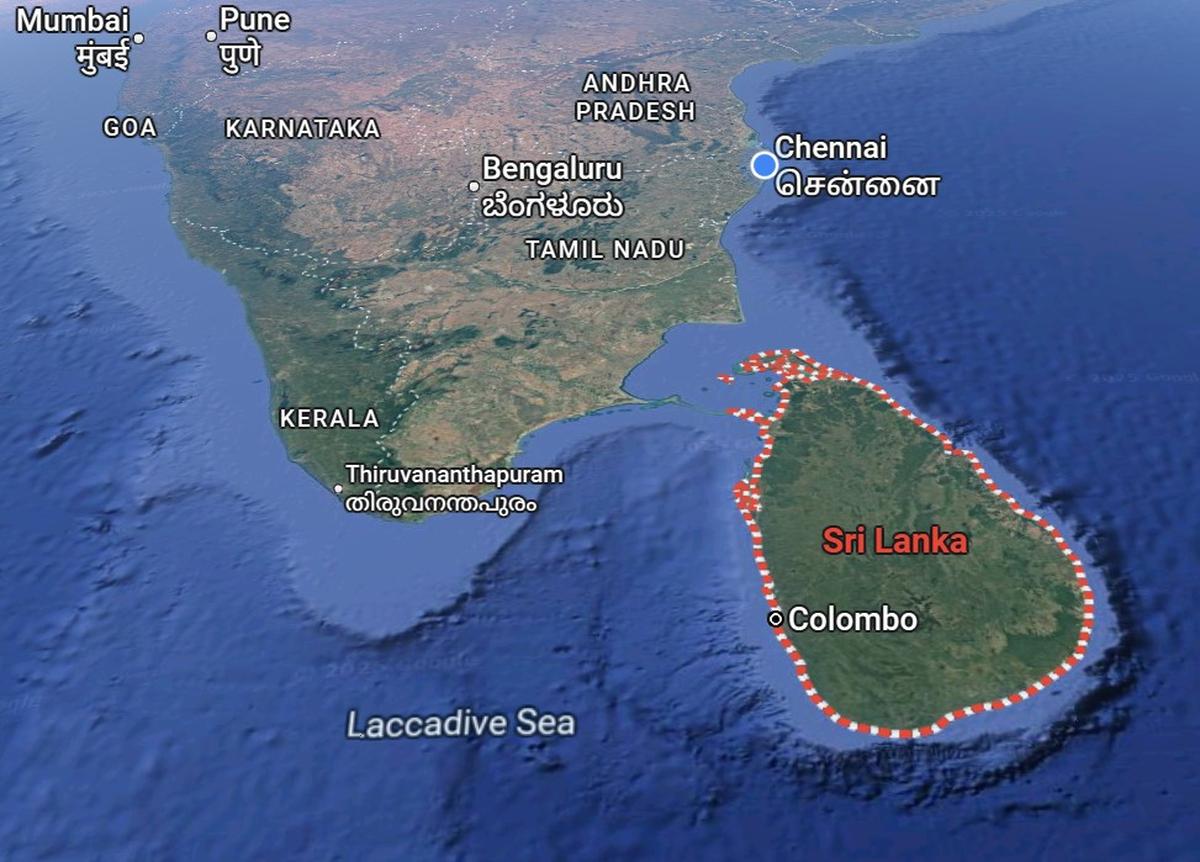Context:
A new study by IITM Pune, INCOIS Hyderabad, and Mangalore University reveals that Sri Lanka’s landmass naturally shields India’s southeastern coast—especially Tamil Nadu and Andhra Pradesh—from destructive Southern Ocean swells. Without this barrier, regions in Andhra Pradesh could face higher swell heights and increased coastal flooding, highlighting the need to factor natural geography into coastal protection strategies.
About Swell Waves:
Swell waves are surface gravity waves generated by distant storms, often thousands of kilometres away. Long-period swells (with wave periods exceeding 14–16 seconds) are especially potent, carrying significant energy even across vast oceanic expanses.
They are known to cause:
· Coastal inundation
· Severe beach erosion
· Damage to infrastructure and ecosystems
In India, the southwestern coast, particularly Kerala, frequently experiences the impact of these swells. Surprisingly, the southeastern coast, including Tamil Nadu and Andhra Pradesh, largely remains unaffected.
About the Study: Methods & Findings:
Key Findings
-
- Increase in Swell Heights: Without Sri Lanka, some the swell heights impacting Andhra Pradesh could increase up to five‑fold.
- More Frequent Extreme Swells: Waves with periods over 15 seconds become much more common—events jump from ~10 in the observed scenario (with Sri Lanka) to ~24 in the no‑Sri Lanka simulation for Andhra Pradesh.
- Differential Protection:
- Tamil Nadu enjoys near‑total protection because of its position directly behind Sri Lanka relative to the origin of many Southern Ocean swells. These swells are blocked or dissipated when crossing or skirting the island. Andhra Pradesh is only partially protected. Some swell energy still reaches it due to waves traveling around Sri Lanka or refracted/diffracted paths. Thus, without Sri Lanka, Andhra Pradesh would see a much higher exposure to powerful swells.
- Tamil Nadu enjoys near‑total protection because of its position directly behind Sri Lanka relative to the origin of many Southern Ocean swells. These swells are blocked or dissipated when crossing or skirting the island. Andhra Pradesh is only partially protected. Some swell energy still reaches it due to waves traveling around Sri Lanka or refracted/diffracted paths. Thus, without Sri Lanka, Andhra Pradesh would see a much higher exposure to powerful swells.
- Impacts on Coastal Hazards: The increase in swell height and frequency implies greater risk of coastal erosion, flooding, damage to coastal infrastructure, and threat to communities in vulnerable low‑lying areas. The natural defence provided by Sri Lanka, therefore, has real life value in hazard reduction.
- Increase in Swell Heights: Without Sri Lanka, some the swell heights impacting Andhra Pradesh could increase up to five‑fold.
Significance for Coastal Risk Management
1. Coastal Planning and Infrastructure
India’s southeastern states must integrate Sri Lanka’s shielding effect into:
· Risk assessment models
· Design of coastal infrastructure (e.g., sea walls, ports, roads)
· Disaster preparedness plans
2. Scenario Modelling
Running “without Sri Lanka” simulations provides a worst-case baseline to estimate maximum swell impact. This can inform design safety margins for coastal defenses.
3. Long-Term Resilience
Recognising and preserving natural protective features — such as Sri Lanka’s landmass and regional vegetation — is crucial for sustainable and cost-effective climate resilience.
Conclusion:
A study by IITM Pune, INCOIS, and Mangalore University confirms Sri Lanka’s landmass significantly shields Tamil Nadu and parts of Andhra Pradesh from powerful ocean swells. As coastal risks rise, integrating natural features like landforms and vegetation into planning offers a sustainable, cost-effective approach to strengthening India’s coastal resilience.







